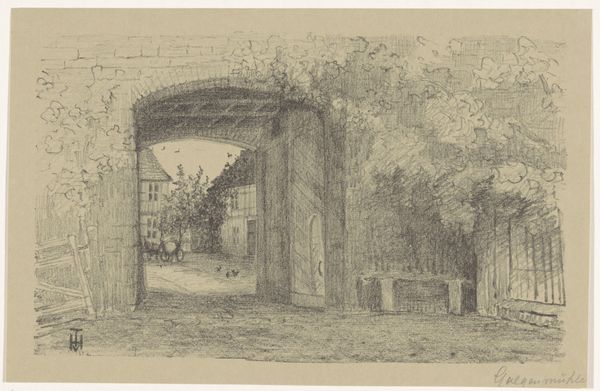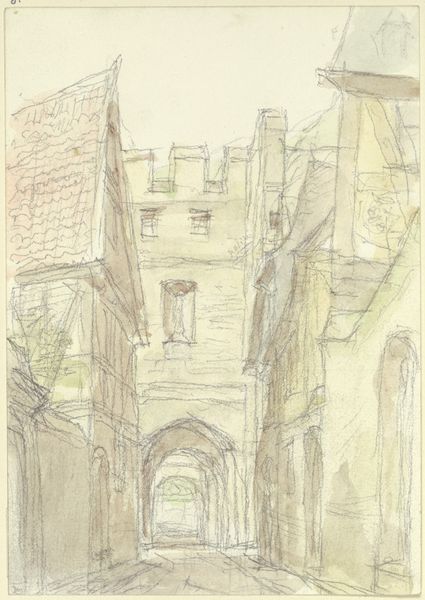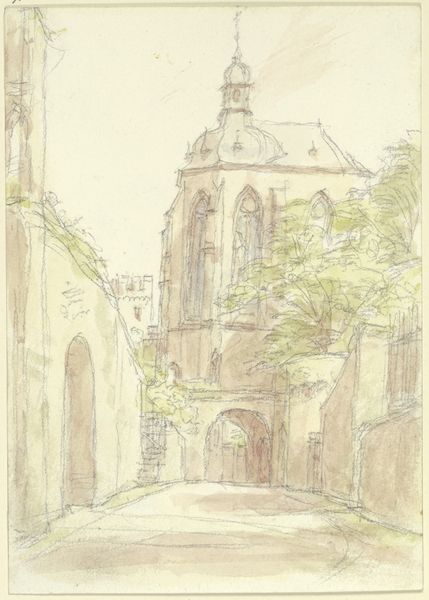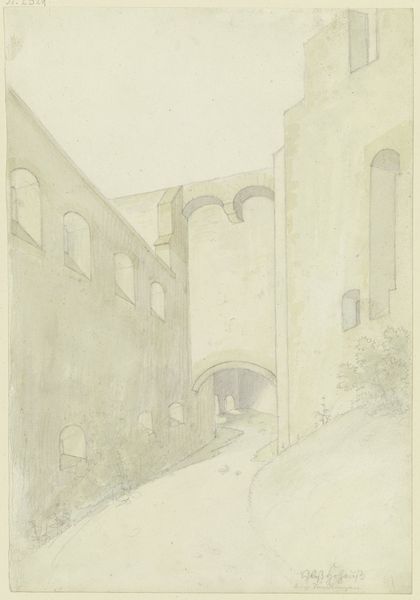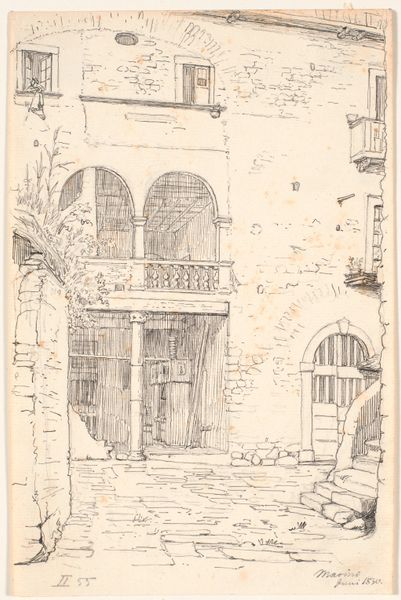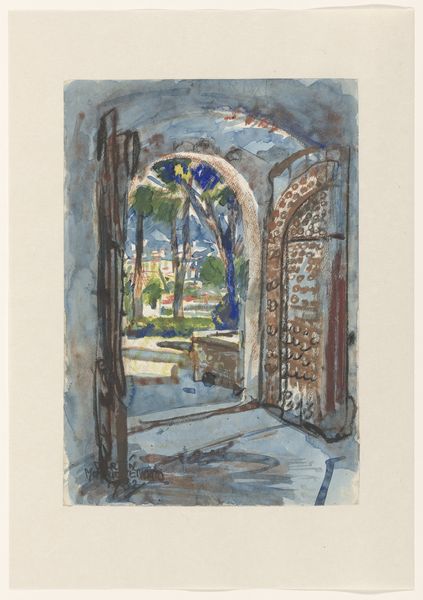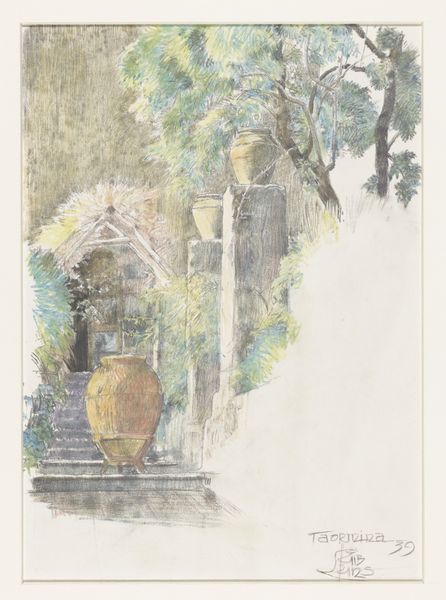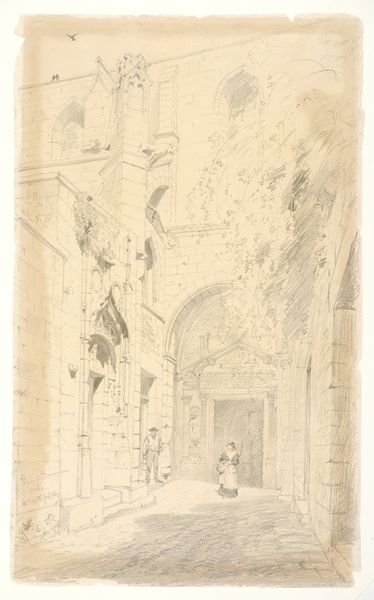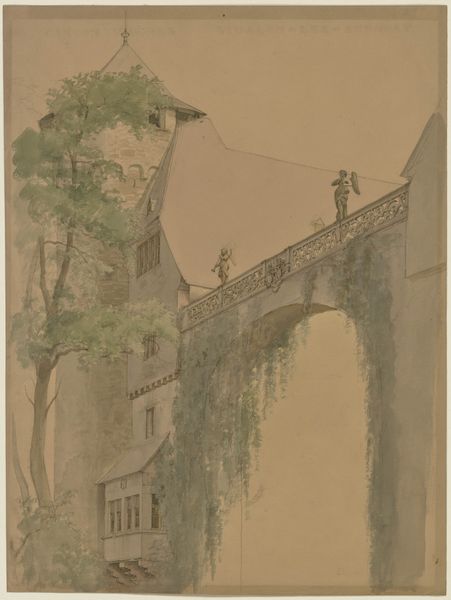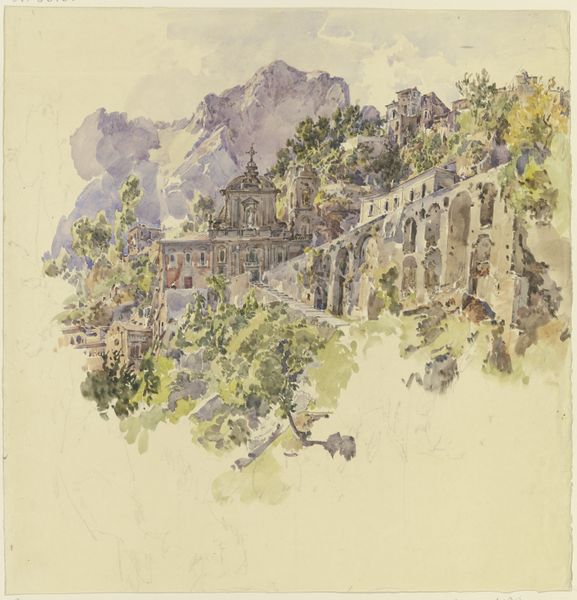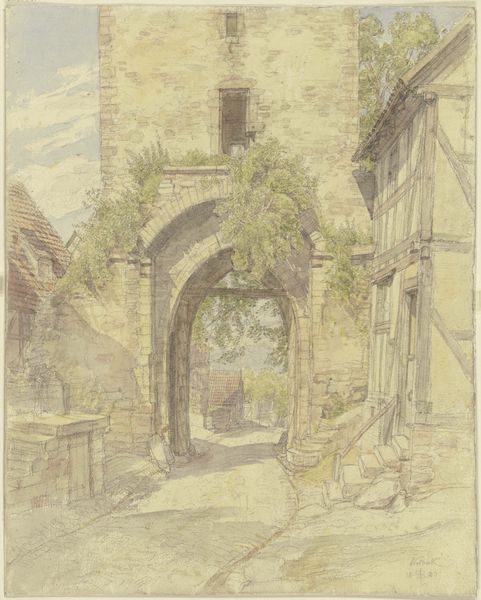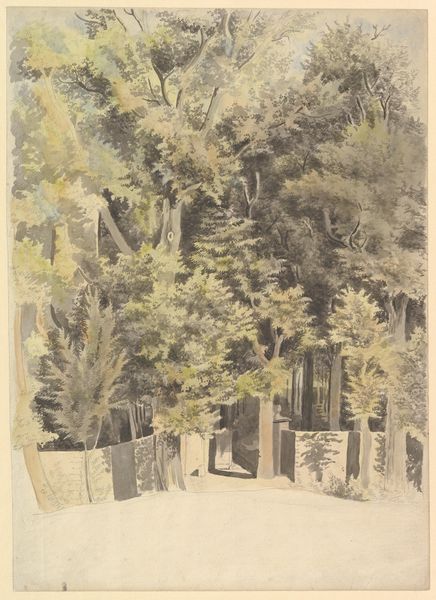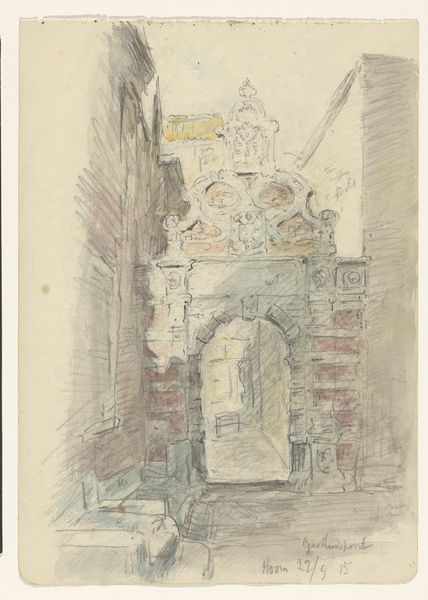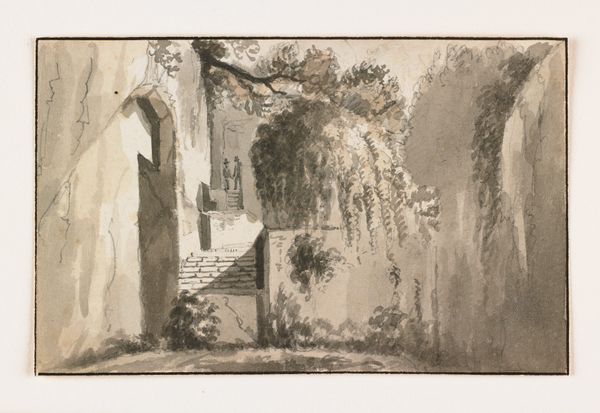
drawing, plein-air, paper, watercolor, architecture
#
drawing
#
plein-air
#
landscape
#
paper
#
watercolor
#
watercolor
#
architecture
#
realism
Copyright: Public Domain
Peter Becker made this delicate pencil and watercolour drawing, Castle Gate of Eppstein Castle, sometime in the nineteenth century. Becker captures the gate of Eppstein Castle, its stone arch softened by the trees that surround it. Eppstein Castle, like many medieval castles in Germany, had become a ruin by the nineteenth century and a popular subject of Romantic artists, but what does it mean to choose a ruin as a subject? Germany in the 1800s was not yet a unified nation. Instead, it consisted of small states with their own distinct identities. Medieval ruins became symbols of a shared German past, reminding viewers of a time when the region had been united under the Holy Roman Empire. As an art historian, I can use sources like travel guides, literature, and historical documents to get a better sense of how the castle and the surrounding area were viewed at the time. By understanding the social and institutional context of the artwork, we can appreciate its significance as a representation of German identity and cultural memory.
Comments
No comments
Be the first to comment and join the conversation on the ultimate creative platform.
